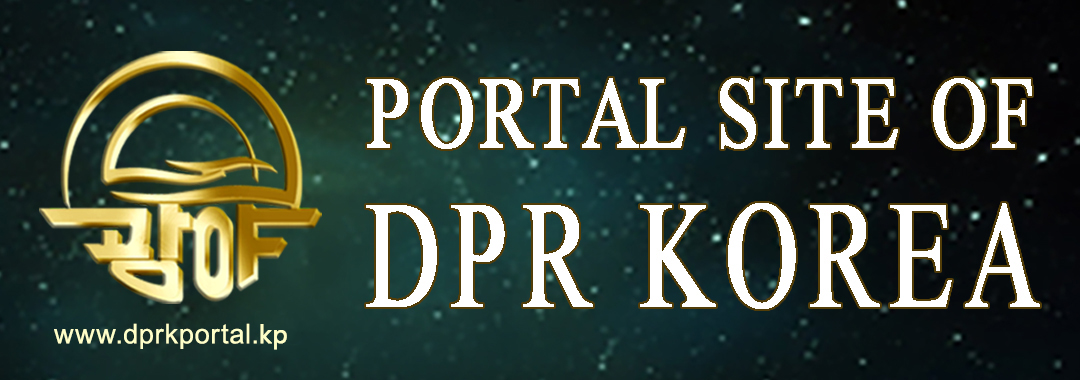



Jo Mar 5, 2025
There are many precious and beautiful living monuments in the DPRK. Phojung Pine Tree is one of them.
It is in Phoha-ri, Myongchon County of North Hamgyong Province.
It is believed to have been planted around 1630.
People in this area also call it “umbrella pine” as it resembles an umbrella and looks so beautiful and exquisite from everywhere.
It is 12 meters tall, with the root collar of 3.2 meters round, the chest-height of 2.8 meters round and the canopy of 15 meters from east to west and 18 meters from north to south.
It is growing straight up to the height of five meters where the branches spread far and wide to bend downwards near the ground, forming a great canopy resembling an umbrella.
What is special about this kind of tree is its small pinecones with no seeds.
This old tree of unique shape and attractive appearance is a precious living monument of scenic and academic significance.
...
Jo Mar 1, 2025
In our country, March is the time when spring sets in.
Seasonal divisions in March are kyongchip and chunbun.
Kyongchip, which literally means the time when hibernating worms start to wriggle, awakened by the melting ice and the rain with thunder, falls around March 5 by the solar calendar.
Chunbun, which means the period in the middle of spring, falls around March 21 by the solar calendar. In this period, there is almost no difference in the length of the day and the night, and although it often blows hard, the weather gets mild and the ground thaws out.
Around kyongchip and chunbun, the Korean people used to mend the fences and spring-clean houses and surroundings to clear away the traces of winter before starting farming. In addition, they liked making delicious food with edible herbs coming out green and fresh in the fields to enjoy the flavor of spring.
The typical herbs are shepherd’s purse and wild garlic.
They also used to pick various kinds of medicinal herbs for storage and do peasants’ dancing and singing to add a zest to farming, hoping for a good harvest.
...
Jo Feb 8, 2025
The Paegak Falls is in Chonbulsan-ri, Yonggwang County, South Hamgyong Province.
Starting from the southern foot of Mt. Chonbul, the waters come down along the granitic rocks.
Around the waterfall are thick forests of oak trees, pine trees, larch trees, etc., high rugged mountains and deep ravines.
Forming a column, the waters fall over the steep cliff making an angle of over seventy-five degrees, which is so stirring and beautiful.
There is no lack of water all the year round and there is a pool at the bottom.
The green trees and red maples in autumn add to the natural beauty of the Paegak Falls.
The waters from the waterfall form a stream, a tributary of the Chonbulsan Stream.
The Paegak Falls, which looks magnificent, miraculous and exceptional, blends well with the trees growing on the cracks of the rocks to provide enchanting scenery of this area.
...
Jo Feb 5, 2025
The Sea Kumgang Gate is about twenty kilometers away from Kosong County Town, Kangwon Province, DPRK.
There are plenty of fish, shellfish and seaweeds in this area. The hills, peaks and cliffs of different heights add beauty to the Sea Kumgang Gate.
Entering the gate, you can enjoy an endless variety of beautiful sceneries within a kilometer.
From long ago, the Korean people have called it Sea Kumgang Gate as it is the entrance to the Sea Kumgang.
On the right side is a large wide rock on which pine trees are growing thickly.
The sea water in the dimple inside the gate is blue and calm like a pool. However, once there is a wind over the sea, towering waves surge against the gate, which produces a crest rocketing into the sky like spouting white smoke.
The Sea Kumgang Gate is of great academic and scenic importance.
...
Jo Feb 1, 2025
February has two seasonal divisions of the year, ripchun and usu.
Ripchun, the first of the 24 seasonal divisions, signifies the opening of spring according to the lunar calendar. It usually falls around February 4th of the solar calendar.
From long ago, the Korean people used to greet ripchun, the first division of spring, with peculiar customs.
On the day, they tidied up their houses and some of them expressed their pleasure of greeting the spring in the diaries. In addition, they cooked some dishes with spring onion grown in a storage pit, leaf mustard, etc. scented with spring fragrance.
What is special about the customs related to farming around ripchun is that there were many ceremonies associated with oxen.
Usu is a term indicating the time when the snow melts and the spring rain starts to fall. It usually falls around February 18-20 of the solar calendar.
Ushering in usu, all the areas except the highlands in the north of our country start to thaw out. The peasants kept snowmelt in all pools and made haste with farming preparations.
In this season, our people used to play yut, tug-of-war, seesaw, kite-flying and other colorful folk games.
...
Jo Jan 13, 2025
Ocha Rock is on the south-west shore of Lagoon Monggum tens of kilometers away from the town of Ryongyon County, South Hwanghae Province, DPRK.
Jangsan Point is the extension of the Pultha mountain range, forming a peninsula. Jangsan Point was formed by the abrasion of quartzite.
The singular Ocha Rock was also formed by such phenomenon. On the shore are standing some cliffs as high as ten to thirty meters. Ocha Rock is twelve to fifteen meters tall and about ten meters round in its bottom.
Ocha Rock is made up of regular layers.
This rare rock formed by abrasion and weathering is of great academic significance and also of great rarity on the coast of the Korean West Sea.
...